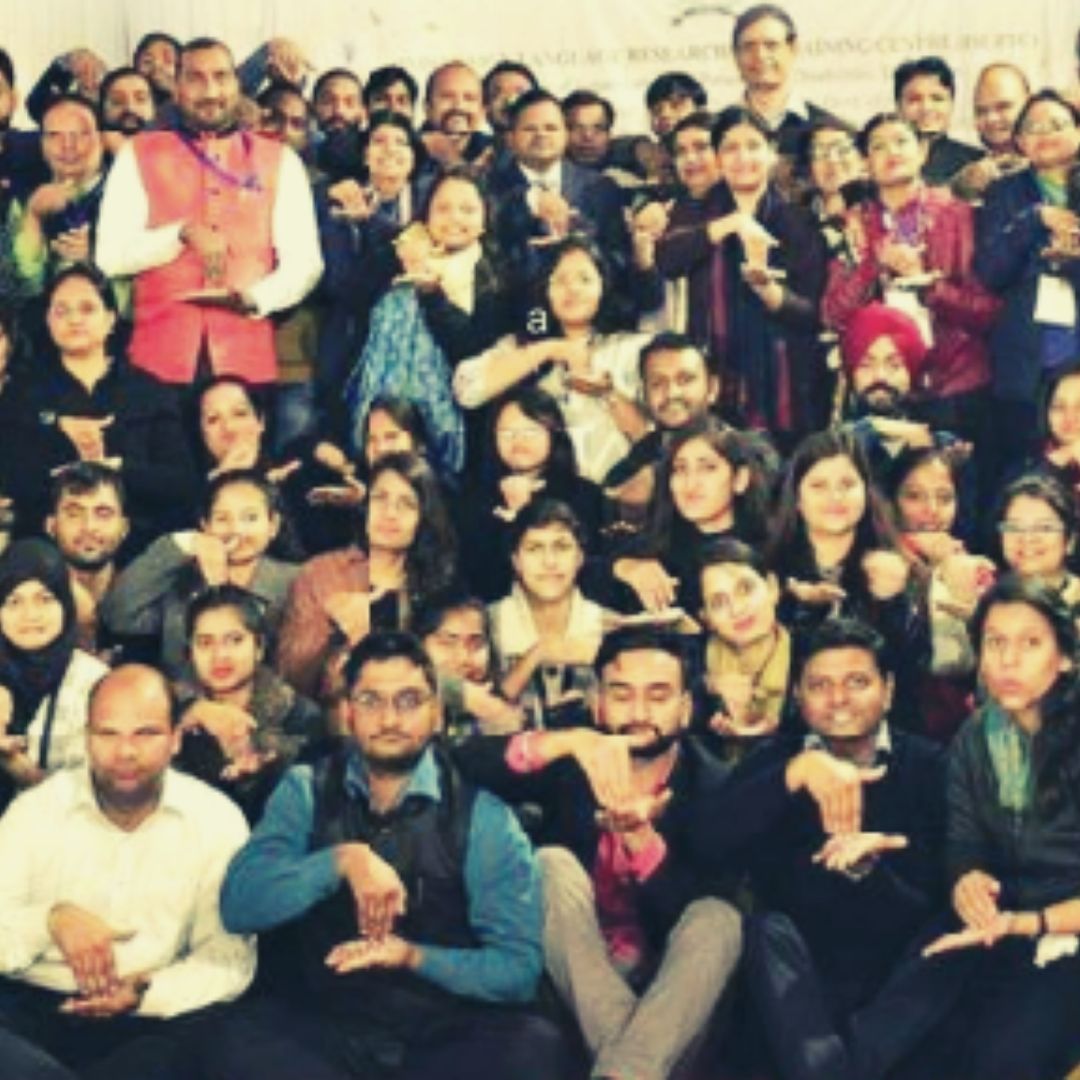
Image Credits: PIB
International Day of Sign Languages: How Is Govt Building Inclusive Society For People With Hearing Impairment?
India, 23 Sep 2021 6:37 AM GMT
Editor : Palak Agrawal |
Palak a journalism graduate believes in simplifying the complicated and writing about the extraordinary lives of ordinary people. She calls herself a " hodophile" or in layman words- a person who loves to travel.
Creatives : Tashafi Nazir
For most people, journalism sounds hectic and chaotic. For her, it's a passion she has been chasing for years. With an extensive media background, Tashafi believes in putting efforts on presenting a simple incident in the most interesting way.
Besides the establishment of a research and training center and several welfare schemes, the government recently released an Indian Sign Language dictionary, comprising of 10,000 words, to ease communication through visual cues.
The International Day of Sign Languages is observed globally every year on September 23. According to the United Nations, this day was celebrated in the year 2018 as part of the International Week of the Deaf. "The choice of 23 September commemorates the date that the WFD was established in 1951," the UN said.
It is observed to encourage and raise awareness about the importance of sign language in the full realisation of the human rights of people having hearing disabilities. Communicating through visual cues like gestures with their hands, face, or body are used to express oneself.
Ever since the UN declared September 23 as the International Sign Language Day, the Indian Sign Language Research and Training Centre, an autonomous body within the Department of Empowerment of Persons with Disabilities, has celebrated it every year.
With an aim to empower the deaf-mute people in the country, sign language has been given the status of an official subject. For the first time in India, the common word vocabulary was created.
According to the World Federation of the Deaf, there are approximately 720 million deaf people globally, 80 per cent of which live in developing countries. They use 300 different types of sign languages. Like any other language, sign language also has its own grammar and rules. As per the 2011 census, about 50 lakh people in India are deaf or mute or have poor hearing abilities, as per The New India Samachar.
Govt's Steps Towards Inclusivity
The Ministry of Social Justice and Empowerment established the Indian Sign Language and Research Training Center in 2016 to empower deaf-mute people, focusing primarily on grooming and training the sign language interpreters and promoting new technology to provide equal access to more than 50 lakh people.
The Ministry has also been assisting NGOs working for the welfare of the deaf under the 'Pt. Deen Dayal Upadhyaya Yojana'. Also, more facilities have been provided to the hearing impairment people under the Rights of Persons with Disabilities Act 2016. If a child below the age of 5 years, belongs to a family with a monthly income of less than Rs 15,000, needs a cochlear implant, the central government bears all the expenses. In addition, speech therapy is provided free of cost to such children for two years, besides making special arrangements for skill development.
India's First Sign Language Dictionary
India has been using the 'Sign Language' for years but somehow lacked uniformity as different ways of saying the same thing was in practice. For example, in South India, if both the arms are placed one on top of the fist, it refers to 'marriage', but the same gesture means 'jail' in some parts of North India. A need for a dictionary was always felt that could act as an intermediate between language and regionalism.
After a lot of research, the Indian Sign Language and Research Training Center created the country's first sign language dictionary. The first edition was launched on March 23, 2018 and around 10,000 words are present in it. It also contains videos that have the sign, the English term for it, and relevant pictures. It also covers regional signs used in different parts of the country.
Recognition As A Language
The 'Sign Language' has also been given the status of a subject in India. On the one year completion of the new National Education Policy in July this year, Prime Minister Narendra Modi had said, "Now students will be able to read it as a language too. This will boost Indian Sign Language and help our Divyang companions a lot."
As per the agreement between NCERT and the Indian Sign Language Research and Training Center, all NCERT textbooks, teacher manuals and other supplementary books and resources from Class 1-12 of Hindi as well as English medium are being converted into Indian Sign Language. The initiative tends to benefit students as well as teachers with hearing impairment.
Also Read: Karnataka Assembly Passes Bill Banning Online Gambling
 All section
All section














